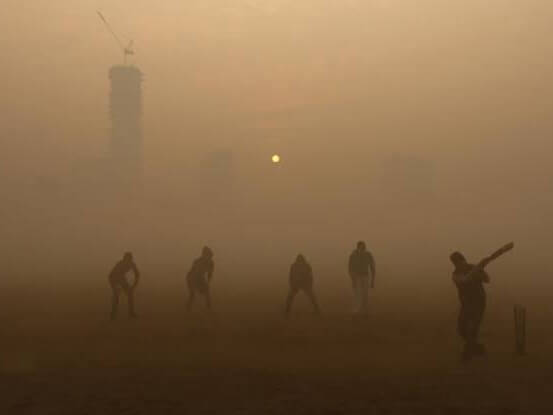Aerosols - The Main Culprit for Rising Air Pollution over Kolkata
News Piece
Nandana Goswami

A recent collaborative study by scientists from India and China, has found that sulphur is the major chemical component, responsible for a long term increase in the aerosol amount over the city of Kolkata, an Indian metropolitan. Aerosols have become one of the biggest concerns for climate researchers in current times.
These tiny solid particles or liquid droplets suspended in the air are responsible for maintaining an optimum heat balance on earth by scattering and absorption of sunlight. However, presently, owing to the overloading of different aerosols in the atmosphere and their harmful chemical compositions proving to be hazardous to human health, they have been defamed as one of the leading pollutants worldwide.
Our country is home to 14 of the 20 most polluted cities in the world with a huge exposure to aerosols."India should be worried", says Bijay Sharma, a research scholar at Indian Institute of Science Education and Research (IISER), Kolkata, associated with this study.
Aerosols having a diameter less than 2.5 microns are particularly dangerous. They are estimated to be the major contributing factor to about 570000 mortalities in India about 42 % of which has been reported from the Indo-Gangetic plains . However, due to lack of a dense network of ground measurement facilities like sun photometers in India, it is a challenge for the environmentalists to report about the country’s long term aerosol trends.
"But understanding long term aerosol trends in India holds a vital key to understanding the air pollution here!", claims Prashant Rawat, the primary investigator of this study, at the Centre for Climate and Environmental studies, IISER Kolkata. Mr. Rawat gathered the aerosol data for the last 17 years over Kolkata and adjoining areas from a state-of-the-art instrument called MODIS, on-board NASA’s Terra and Aqua satellites, alongside MERRA-2 , one of the latest analytic tools from NASA. His approach has uniquely overcome the long-standing hurdle of ground measurement deficiency in aerosol levels.
According to this research, Kolkata has suffered a 32% increase in total Aerosol Optical Depth (AOD) - the amount of aerosols in the vertical column of atmosphere over an area of interest from 2001-2017. AOD for sulphate shows the largest increase of 70%, followed by organic carbon and black carbon with increases of 40% and 20% respectively. The study thus leads to a conclusion that sulphate literally drives the entire AOD rise in the region.
It has also been found that there is a dominance of finer aerosols over the Gangetic plains especially during the post-monsoon season relative to the dry summer. Mr. Rawat explains that summers, being dry, may cause the uppermost soil to erode away and the coarser soil dust remains suspended in the air. On the other hand, during post-monsoon and winter, a relative spike in biomass burning might be a relevant candidate as a source for the finer aerosols.
The wind trajectories of these aerosols have been used to identify their sources - locations of major thermal power plants and regional burning of agricultural crop residue, in the Gangetic plains. This indicates that long-range transport of aerosols from the central or north-western Gangetic plains also add to the aerosol load over Kolkata.
Mr. Rawat acknowledges that their research comes with certain degrees of uncertainties. “However,” he emphasizes,“ the report is legitimate enough to strongly imply that the air quality of the country is degrading faster than we expect.”
Scientific research should always play a vital role in government policies. Therefore, these recent findings should act as an eye-opener for the authorities so that climate policies in the country can be introduced or reformed accordingly, to mitigate the delicacy of the current situation.
Nandana Goswami is a ball-like creature who disguises as a MS student in the Petrology Lab of IISER Kolkata. She loves studying metamorphic rocks and tracing history through them; and sometimes cuts off all ties from the world and lives under them. Her love for rocks extends to rock music too! Once in a while, she travels, in search of new rocks. Apart from rocks, she also likes people and hopes to spread scientific knowledge to people who, unlike her, prefer to live under rocks the whole time. Nandana rocks!
signup with your email to get the latest articles instantly